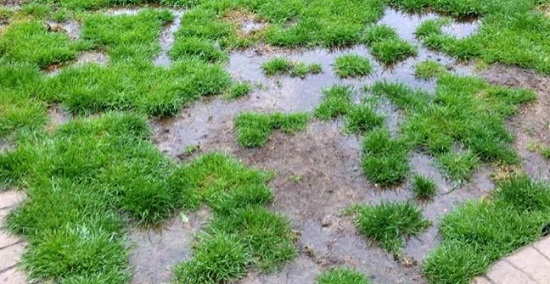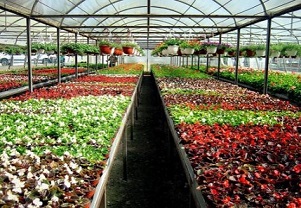Water logged Gardens how to fix and repair

Visit Gardeners Delight Nursery
Visit our 5 acres plant nursey just outside barnstaple, view our greenhouses, and shop .
Old Bideford Rd,
Barnstaple,devon, EX31 2PA

Read more! Get Directions!
Visit On-line Site
A selection of our quality plants are now available to buy on our online store.
Check out our range of:-
Heuchera, Lavenders, alpines, Herbaceous Perennials, Herbs, Clematis, Trachelospmum, Passiflora, and Agapanthus.
We also have a full range of sundries and gift vouchers.

Buy Now!
More Blogs
Places to Visit
Also visit some of the gardens that are open to the public throughout the region for ideas of varieties that will thrive in your area
- National trust
- RHS properties.
- The national garden scheme
- Eden Project
- Lost gardens of Heligan
- Local nurseries (not garden centres) as these plants are grown locally
It has been a really wet winter this year in North Devon and many gardeners are looking at a garden with puddles that will not drain. This is usually down to poor drainage, a clay or shillet sub soil or soil that is compacted, especially on grassy areas where children play or is used as a footpath across the garden.
Need help with your garden, from regular tidys up and lawn maintance to specialict prunning and tree cutting. We also design and build gardens. Please call Gardeners Delight gardening services Free Quote!
POOR DRAINAGE - New Buildings
This is very common on new builds where the building contractor has removed the top soil before starting to build and then compacting soil with heavy construction machinery, which also pushes any waste building materials such as bricks into the ground. This is covered over with a thin layer of soil and usually turfed to make the property presentable. The best way to tackle this is to remove the turf, which can be stacked upside down in a pile to kill the grass and become good top soil, then remove the good soil from underneath the turf until you see the subsoil which is usually a different colour and texture. Dig over the sub soil to at least one spade depth and remove as much builders waste and then incorporate a generous amount of organic matter and sharp grit. Lightly compact this by walking over and rake level. Cover with at least 150mm of good quality top soil and again lightly compact and rake to produce a fine tilth. If possible incorporate a slight slope or hump shape so that the water can drain away from your property. When you are happy re-turf with good quality turf for instant effect or to reduce cost grass seed.
Poor Drainage Clay Subbase
North Devon has plenty of clay which the local world famous "Branhams Pottery" used for many years. A layer of clay in the sub surface will cause severe problems as the water will take a long time to drain through, to drain this type of land is quite heavy work and can be costly to do properly. Firstly see if you have an area like a dyke or ditch that you can drain the land to or a part of the garden that doesn't matter if it is wet. Remove any grass and stack to make topsoil in the future and then scrape away the surface top soil for reuse later. Now dig a trench through the plot at least 30cm deep about a spade wide, this must have a gentle slope towards the point that you wish it to drain to, which should be away from any property. Then dig connecting trenches in a herringbone pattern about 2m apart from both sides of the plot to join into the central trench, these must slope towards the central trench. Lay a layer of pea gravel or pipe bedding approximately 50mm deep along the base of each trench ensuring that the slopes for drainage direction are maintained .Once you are happy that this is correct lay a perforated pipe along each side trench and connect this to one that runs down the central trench. This pipe can be rigid or flexible the latter being cheaper but can be a bit awkward to work with so weigh it down regularly to keep in place. Now fill the trench with pea gravel or slightly larger stone, but not sharp stones that might crush or puncture the pipe. When the trenches are full of gravel dig over the remaining areas and incorporate organic matter before reinstating the top soil to at least 150mm, level off the surface and lightly compact and rake to create a fine tilth before you re-turf or seed. This system of trenches will also work to some degree if you cannot form an actual drain point as it will create a storage sump for the water in really wet periods.
POOR DRAINAGE - Shillet
Fairly easy but can be quite time consuming. A natural layer of stone and soil that is compacted below the soil can causes areas of ground that will not drain, this is often found in coastal areas around Norh Devon. Remove any grass and top soil first to expose the sub surface. Using a mechanical chisel or breaker loosen the top 300mm of stones, this will allow the water to start draining, reinstatement starts with adding a layer of well composted organic material and then top soil to 150mm and re-turf as for clay soils.
COMPACTED AREAS
Lawns Lawns and grass areas easily get compacted by from general use. The cheapest option is to use a good strong garden fork. Insert this vertically into the grass as deep as you can go and then lever it backwards around 30 degrees. Repeat this all over the area. In the spring when the ground a has drained repeat the spiking and then brush into the lawn a layer of sharp sand working it into the holes. Mechanical machines can be used to carry out this process. They either slit the lawn or punch holes into the soil and pull up a plug of soil. These are best used in spring or autumn when the ground is not waterlogged, again brush into the lawn sharp sand which will improve the drainage. With all lawns remove any moss in spring by scarifying with either a spring tine rake or mechanically with specialist machinery. Feed with a spring weed and feed fertiliser and repeat this with an autumn feed as well. When you start to cut the grass keep the mower blades high, short grass encourages weeds and moss
COMPACTED PATHWAYS
The cheapest option is to use a good strong garden fork. Insert this vertically into the ground as deep as you can go and then lever it backwards around 30 degrees. Repeat this all over the area. A more permanent option is to remove the top soil and us in the garden. Remove some sub soil to allow a stone drainage layer to be added to a depth of 50mm and then use a plastic grid paver to finish at the required height of you path, adding more stone to get this level. When the grid is in position fill with a mix of top soil and sharp sand or fine grit, water in and repeat until you are happy that the soil has filled all the small squares and the grass seed , later cutting like a lawn. If grass is not required fill the grid with fine grit to create your pathway but still keeping a natural look.
RAISED BEDS
If you find the thought of excavating and adding drainage or that it is not possible to do, then consider constructing raised beds in your garden and covering the ground with a permeable material such as gravel, which can create a maintenance free area.